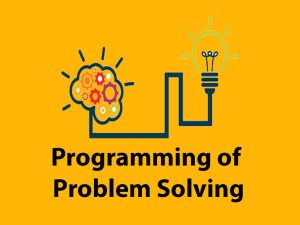MCS – 011 PROBLEM SOLVING AND PROGRAMMING (BCA) Important Question
- Draw a Flowchart with an Algorithm for each.
- Mention the rules of using Big-O notation.
- Explain the Linker errors.
- Explain variables.? How are variables declared in C? What are the rules to name variables in C? How do assign a value to the variable at the time of declaration? Explain with a suitable example.
- What are Arithmetical and Logical Operators?
- Write a program to find the string length without using the stolen () function.
- Define the function prototypes with an example for each.
- Difference between Call by Reference and call by value using an example program for each?
- What is Recursion? Write the recursion function in C to generate a Fibonacci Series. Explain the following terms with examples in C.
b) Nested if statement
c) Switch statement
d) For loop statement - Calculate the Net Salary if the basic TA, TD, allowance& deduction are given using structures.
- Explain union. Give an example code segment to initialize a union and access a member of a union.
- Difference between Structure and Union?
- Define a Pointer. How is a pointer variable different from an array?
- Illustrate the pointer concept with the help of a program in C.
Pass by value
Pass by reference - Write a program to swap the values.
- Write a program to reverse an input string using pointers.
- Write the program to test whether the given string is a number palindrome or not.
- Difference between Sequential and Random Access Files?
- Write the program to find out the square and cube of a given number using macros.
- Explain the term File Handling. What is the use of open (), and close () in file handling with an example in C?
- Explain the use of the following function in C with an example.
- Write a program in C language to multiply two matrices A and B of size 3*3.
- Write the program in C to find the all number is Amstrong numbers in the range of 0-999.?
- Find the largest and smallest number among three numbers given as input. Also, draw a flowchart for these algorithms?
- Computer Organization and Architecture: What is the basic structure of a computer system? What are the different types of memory and their characteristics? How are data and instructions stored in memory and processed by the CPU?
- Assembly Language Programming: What is assembly language, and how is it different from high-level languages? How do you write simple programs in assembly language? What is the role of the assembler in converting assembly code to machine code?
- Computer Networks: What is a computer network, and how does it work? What are the different types of network topologies and protocols? How do you troubleshoot common network problems?
- Operating Systems: What is an operating system, and what are its functions? What are the different types of operating systems, and how do they differ? What is process management, and how does it work in an operating system?
- Data Structures and Algorithms: What are data structures, and why are they important? What are the different types of data structures, and how do you implement them in a program? What are algorithms, and how do you analyze their efficiency?
- Design an algorithm and draw a flowchart and program to convert decimal numbers into binary numbers.

